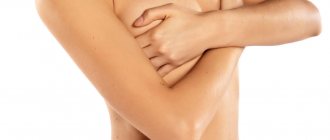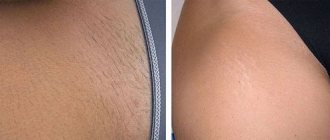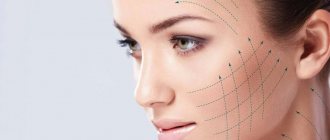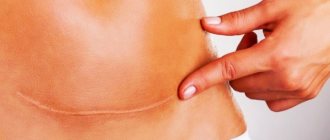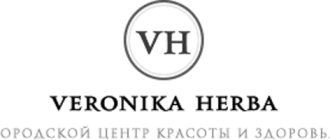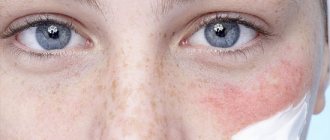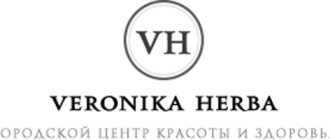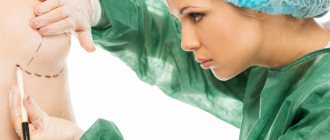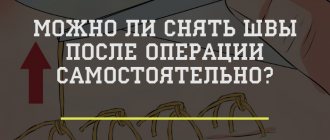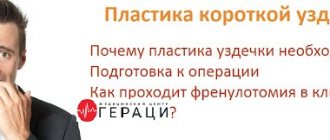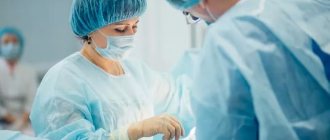To understand postoperative sutures, you first need to understand what osteoplasty is and one of its types - sinus lifting. Osteoplasty is a surgical intervention in which bone tissue grows at the site where there was a decrease in bone volume and/or injury. Most often, osteoplasty is performed during dental implantation. And the sooner bone plastic surgery is performed after tooth extraction, the better the recovery effect will be and the easier the preparation for manipulation will be. The following types of osteoplasty are distinguished:
- Osteoplasty affecting the mandibular bone in its lateral parts;
- Osteoplasty affecting the maxillary bone and its alveolar process;
- Osteoplasty affecting the maxillary bone in its lateral parts, or sinus lifting
Osteoplasty of the lateral sections of the manidibular bone is used in cases where the width and length of the alveolar processes decrease and the distance to the mandibular canal decreases. If the amount of bone tissue there decreases significantly, this will lead to malocclusion, of the mesial type.
Osteoplasty on the alveolar process of the maxillary bone is associated primarily with the splitting of bone tissue and the subsequent formation of a sharp, fragile, thin alveolar ridge. The main difficulty of this operation is to achieve the most beautiful cosmetic effect.
Sinus lifting is currently the most popular type of osteoplasty, and is called so because the operation is performed in the area of the sinuses or maxillary sinuses. It is carried out according to the closed and open type, and the process differs only in the method of introducing the implant into the site of future tissue growth.
The need for suturing in dentistry
Surgical intervention and, as a consequence, suturing are indicated for the following manipulations:
- Removal of wisdom teeth - third molars differ from the rest in the large size of the tooth crown and its root. Late eruption, the position of the “extreme” in the dentition very often leads to a violation of the physiological location of the tooth or even its impaction (partial or complete failure to erupt). In this regard, the procedure for removing a wisdom tooth is often accompanied by complications - extensive damage to the soft tissues of the oral cavity and alveolar process, ligaments, and blood vessels. To avoid this kind of consequences, dentists apply stitches to reduce the wound.
- Implantation - its implementation is always accompanied by the need for surgical intervention. A deep incision in the gum requires suturing.
- Maxillofacial operations - elimination of the consequences of traumatic injuries, congenital defects of the dentofacial apparatus.
- Removal of tumors of various etiologies - the integrity of the soft tissues of the oral cavity is damaged, often requiring layer-by-layer sutures.
Types of sutures and materials used in dentistry
To facilitate and accelerate the healing process of postoperative wounds in the oral cavity, the following types of sutures are used:
- nodal - used when it is important to ensure equal tension on both edges of the wound (for example, between teeth);
- continuous - when a violation of the integrity of soft tissue occurs along several dental units;
- single - each stitch is knitted separately from each other.
Threads used for suturing in dentistry can be made of absorbable and non-absorbable material.
Absorbable threads:
- from catgut - which contains a foreign protein, which is perceived by the body as a foreign body, and therefore often causes inflammation of the damaged soft tissue of the patient’s oral cavity;
- “Vicryl” is a synthetic material made from polyclatin and polyglycomic acid, which does not cause the risk of developing inflammatory processes even during complex operations.
Threads made of absorbable material do not require the removal of sutures; they disappear within 2-5 weeks.
Material for non-absorbable threads:
- silk is an easy-to-use material, highly durable, but has a significant drawback - it causes inflammatory processes in soft tissues if not removed 7 to 10 days after surgery;
- monofilament is a thread made of polytetrafluoroethylene, which is durable and does not cause inflammation, but has a rigid structure that can damage the mucous membrane. To exclude this possibility, a bandage is applied to the wound surface;
- polyester is a woven thread often coated with silicone for elasticity and smoothness. A very durable material that does not lead to inflammatory processes, but requires careful fixation in the form of knots.
How to properly care for seams
If the patient is in the hospital, a doctor or nurse will care for the sutures. At home, the patient should follow the doctor's recommendations for wound care. It is necessary to keep the wound clean, treat it daily with an antiseptic: a solution of iodine, potassium permanganate, brilliant green. If a bandage is applied, consult your doctor before removing it. Special medications can speed up healing. One of these products is contractubex gel, containing onion extract, allantoin, and heparin. It can be applied after epithelization of the wound.
Healing of sutures after childbirth
For the speedy healing of postpartum sutures, strict adherence to hygiene rules is required:
All comments
Elena 11/27/2017 at 11:47 am # Reply
Thank you very much for the article! I especially liked the part about the factors that affect the speed of healing of sutures
When and how is the procedure for removing sutures in dentistry performed?
The time for suture removal is determined by the dentist, guided by the process of regeneration (healing) of the soft tissues of the mucous membrane, which depends on:
- on the age of the patient;
- complications of surgical intervention;
- presence of complications.
Usually, sutures are removed 5-10 days after they are applied.
The dentist removes sutures as follows:
- the surface of the wound is disinfected with an antiseptic;
- if the patient has a low pain threshold, local anesthetics are used (but usually this is not necessary);
- Using surgical scissors and anatomical tweezers, the dentist carefully cuts and removes the threads from the healed wound;
- a visual examination is carried out to check the integrity of the wound;
- Disinfection of the suture prevents the risk of wound inflammation.
Sometimes sutures are removed due to the risk of suppuration in the area of the operation. In this case, the sutures are removed, sanitizing procedures are performed and appropriate antimicrobial therapy is prescribed.
Physiotherapy
Physiotherapeutic procedures are prescribed when the main stage of rehabilitation is completed. Their action is aimed at improving blood circulation and lymph flow in the sore back. This helps relieve swelling, inflammation, and improves the supply of nutrients to the diseased area. The result is rapid tissue healing, restoration of muscles and nerve fibers.
In most cases, the doctor prescribes several procedures that improve the effect of each other. This:
- Electromyostimulation
is electrical stimulation of nerves and muscles aimed at improving their functioning. - Iontophoresis
- a current of low strength and voltage is supplied through electrodes. Its action is aimed at improving the condition of smooth muscles and blood vessels. Also, using the procedure, you can deliver medications to the deeper layers of the skin. - Magnetotherapy
is the effect on the body using magnetic fields, which helps improve nervous, immune, and metabolic processes. - UHF
is the effect of a high-frequency magnetic field on the body, which increases the permeability of blood vessels. Penetration of nutrients and immune cells to the diseased area improves. This stimulates tissue growth, development and healing after the hernia is removed. - Laser therapy
is the effect of a beam of concentrated light on the diseased area, which helps to warm up the soft tissues, improve blood flow, and heal the diseased area. - Diadynamic therapy
is treatment with current of different frequencies, which has an analgesic effect, improves metabolism, nerve and muscle function.
Each physiotherapy course consists of 10-15 sessions. Treatment can be continued after a short break if there are medical indications.
Manual therapy, massage
Manual therapy methods, primarily massage, will improve the condition of muscles and nervous tissue. With their help you can:
- quickly restore range of motion;
- stimulate tissue regeneration;
- remove neurological symptoms, which often persist after surgery.
Massage is prescribed no earlier than the third stage of rehabilitation after spinal hernia surgery, otherwise recently healed tissue can be damaged. A good effect is achieved by combining manual therapy with other physiotherapeutic procedures. The massage must be performed by a qualified specialist, which is confirmed by a medical diploma, reviews, and client comments.
Corset and neck collar
Corset and cervical collar are fixing accessories that need to be worn after surgery to remove lumbar and cervical hernia
If there has been surgery for a lumbar disc herniation, rehabilitation involves wearing a semi-rigid corset. If the hernia was in the upper back, you need a Shants collar.
The purpose of fixing accessories:
- correctly distribute the load, reducing pressure on the cervical, thoracic or lumbar spine;
- protect your back from overload;
- prevent sudden movements;
- reduce pain;
- recover faster after surgery.
The corset and/or collar is worn when performing exercise therapy or doing housework. According to reviews, they are very helpful when walking and at work. When the doctor allows you to drive in a car, you also cannot do without a corset.
The corset is put on and removed while lying on your back. You must wear it for at least 2 months. after surgery from 3 to 6 hours a day, and remove only at night and before daytime rest. If your doctor allows you to go to work, check with him how many hours you need to be in a corset. You cannot wear it all the time, because the back muscles will weaken too much, which will have a bad effect on the functioning of the musculoskeletal system.
Diet
During the rehabilitation period, pay special attention to diet. The body extracts nutrients from foods that are used to build cells. Therefore, food should be healthy and easily digestible.
Meat broth, cartilage, jellied meat are a natural analogue of chondoprotectors that strengthen the tissues of the intervertebral disc and prevent recurrence of the hernia. Also, products must contain fiber, vitamins A, B, C, D, phosphorus, manganese, potassium, calcium. That is why include products containing them in your menu:
- lean meat;
- offal - kidneys, heart, liver, brains;
- eggs;
- nuts;
- legumes;
- vegetables fruits;
- honey;
- dairy products.
Avoid foods that contribute to weight gain, which puts stress on the spine. Nutritionists do not recommend fatty, pickled, salted, smoked foods; they advise limiting sweets.
During the rehabilitation period, it is important to follow a diet
Hygienic oral care after suture removal
To quickly restore the integrity of the soft tissue of the oral cavity, the patient must:
- Use a soft toothbrush to brush your teeth daily;
- use anti-inflammatory rinses;
- rinse the mouth with warm water or a decoction of medicinal herbs after each meal;
- Avoid eating hard, sour, salty, spicy foods that can irritate the mucous membrane.
Timely removal of sutures, maintaining oral hygiene, and performing procedures prescribed by the dentist will ensure good wound healing and speed up recovery.
Rehabilitation after liposculpture
Body liposculpture allows you to instantly get rid of “fat traps”, recreate an athletic profile and compensate for the lack of soft tissue volume (enlarge your breasts, buttocks). Liposculpture includes liposuction and lipofilling and is a minimally invasive operation (without incisions), since the surgeon performs all manipulations with a special cannula through small punctures in the skin. Our clinic has installed the latest vibration liposuction device PAL Liposculptor
, which makes such a serious and complex operation as gentle as possible - it eliminates damage to blood vessels, extensive hematomas, and bumps on the skin.
However, rehabilitation after liposculpture of the body cannot be called simple, especially if the plastic surgeon worked on more than 2 zones. After the operation, it is important to wear compression garments
, temporarily give up sports training (later it is not only possible to return to it, but it is highly desirable - to consolidate the result) and follow other doctor’s recommendations.
